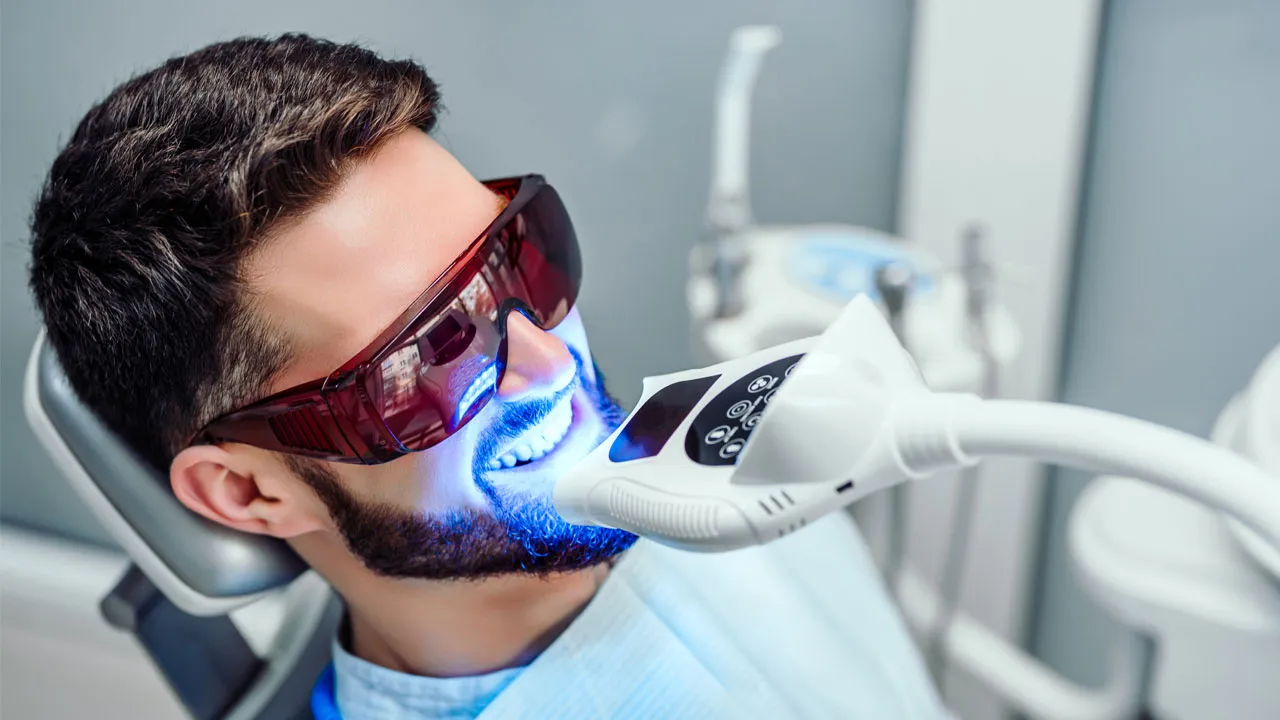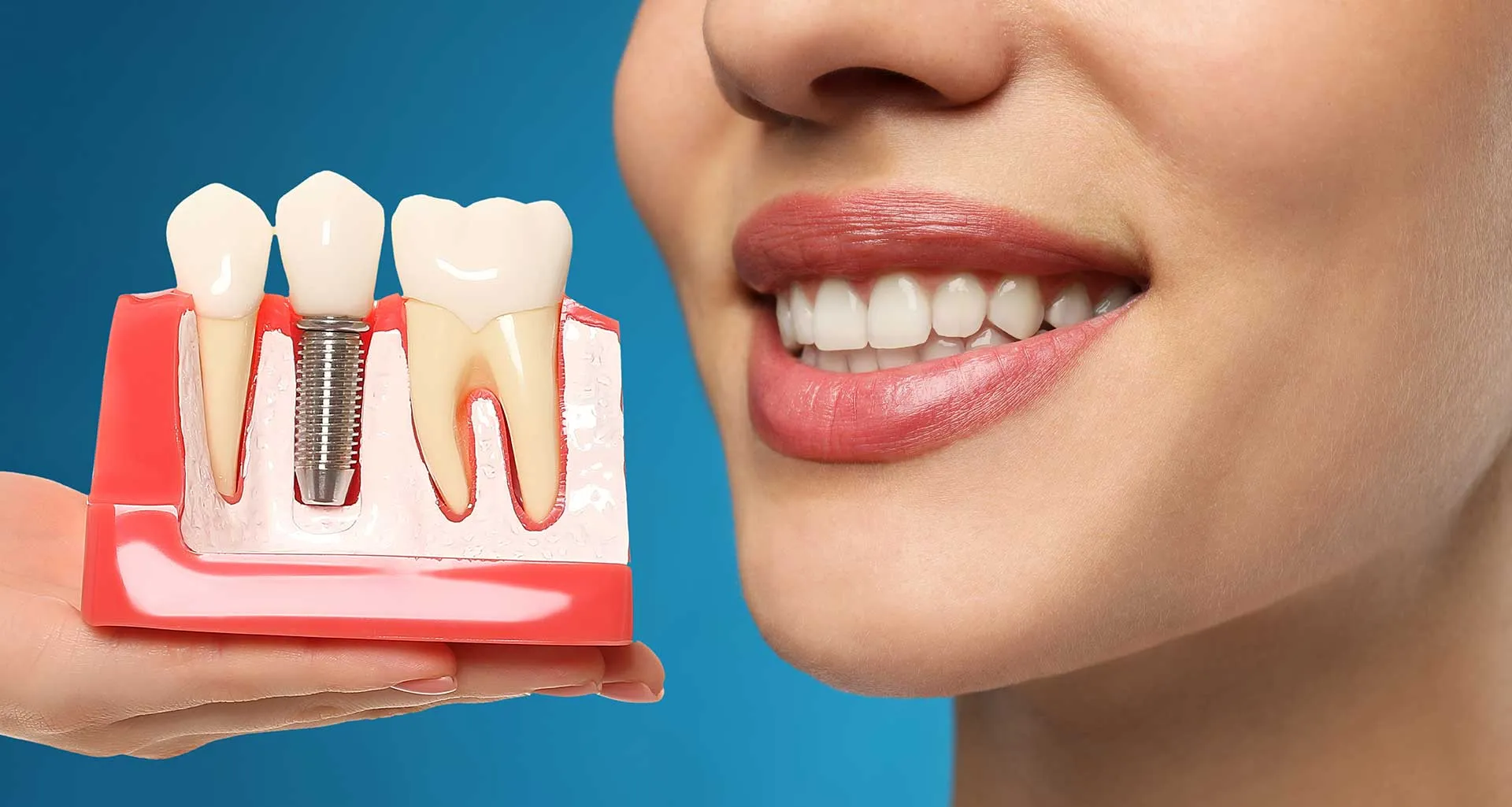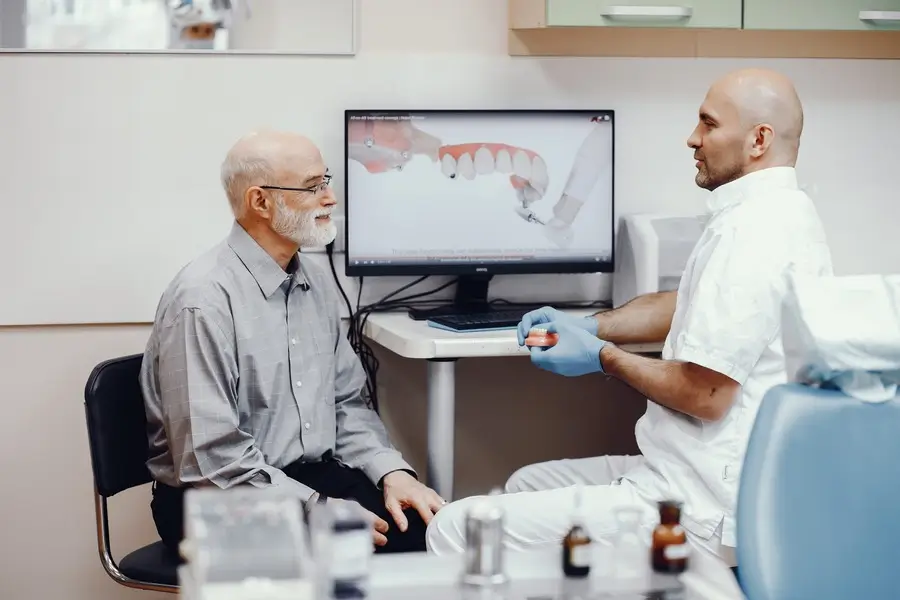A radiant, white smile is often seen as a universal symbol of health, confidence, and success. It’s one of the first things people notice when they meet you and it can leave a lasting impression in both personal and professional settings. Unfortunately, maintaining naturally white teeth isn’t easy. Over time, our teeth can lose their sparkle due to a combination of diet, aging, medications, and everyday lifestyle habits.
Coffee in the morning, a glass of red wine at dinner, or even certain fruits and sauces can gradually stain the enamel, leading to a dull or yellowish appearance. Add to that the natural wear and tear that comes with aging and it’s no surprise that teeth whitening has become one of the most popular cosmetic dental treatments worldwide.
From quick in-office whitening sessions to convenient at-home whitening kits, there’s no shortage of options for achieving a brighter smile. But once you’ve invested your time and money in whitening treatments, a question naturally follows:
A bright, white smile is often seen as a sign of health, confidence, and good oral hygiene. However, over time, teeth naturally become discolored due to aging, diet, and lifestyle habits. Teeth whitening is a cosmetic dental treatment designed to remove stains and lighten tooth color, restoring a radiant smile. It primarily targets stains on both the enamel (the outer layer) and dentin (the inner layer beneath the enamel).
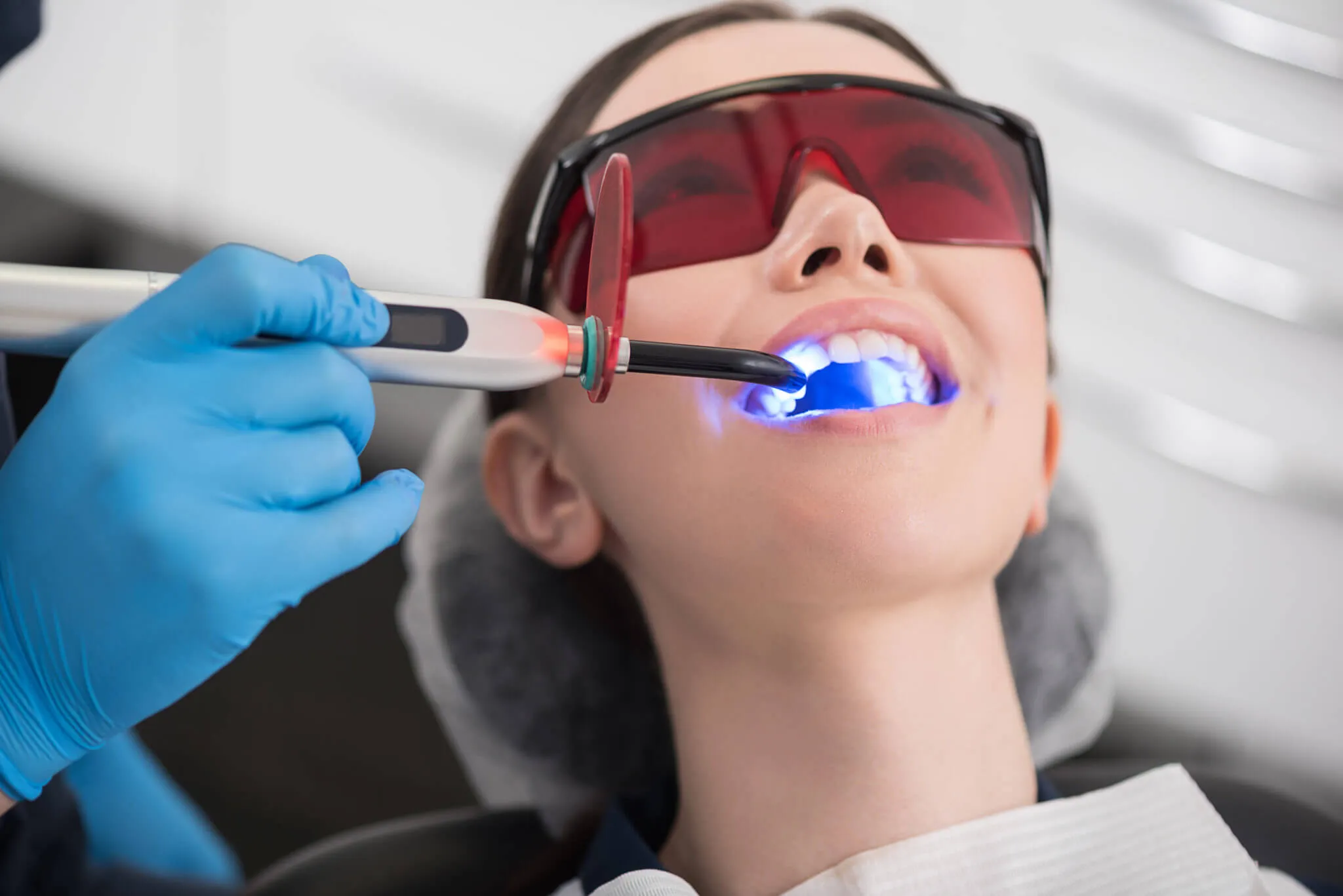
Teeth whitening treatments use active bleaching agents such as hydrogen peroxide or carbamide peroxide. These chemicals penetrate the porous enamel surface and break down chromogens the dark-colored molecules responsible for stains.
As these stains are oxidized and disintegrated, the teeth gradually appear whiter and more reflective. The degree of whitening depends on several factors, including the type of stains, treatment duration, and concentration of the bleaching agent.
There are two main types of stains:
Extrinsic stains: Caused by coffee, tea, tobacco, and certain foods that discolor the enamel surface.
Intrinsic stains: Develop inside the tooth due to factors like aging, trauma, or medication (e.g., tetracycline). These are harder to remove and often require professional whitening.
Types of Teeth Whitening Treatments
Modern dentistry offers several whitening options to fit different needs, budgets, and lifestyles. Here’s a closer look at each:
1. In-Office Professional Whitening
Professional teeth whitening performed by a dentist is the most effective and immediate method for achieving noticeable results. Dentists use a high concentration of bleaching agents (up to 40% hydrogen peroxide), sometimes activated by special lights or lasers to enhance the reaction.
Procedure Overview:
Gums and soft tissues are protected with a barrier.
The whitening gel is applied to the teeth.
A specialized light or laser may be used to speed up the process.
The treatment typically takes 45–60 minutes.
Key Benefits:
Instant, visible results after one session.
Safe and supervised by dental professionals.
Reduces risk of gum irritation or tooth sensitivity.
Typical Results Last: 12 to 24 months (with proper oral care and minimal stain exposure).
2. At-Home Whitening Kits (Dentist-Supervised)
Dentist-prescribed take-home whitening kits offer professional-grade results with added convenience. These kits include custom-fitted trays and professional bleaching gel with lower concentrations of active ingredients compared to in-office treatments.
How It Works:
Custom trays are created from impressions of your teeth.
You apply whitening gel in the trays and wear them for a few hours daily or overnight.
The process typically takes 1–2 weeks for full results.
Advantages:
Professional-level whitening at home.
Controlled and safe when following dentist instructions.
Gradual results with less sensitivity.
Typical Results Last: 6 to 12 months.
3. Whitening Toothpaste and Strips
For mild or surface-level discoloration, over-the-counter (OTC) options like whitening toothpaste and strips can help maintain brightness between professional treatments.
How They Work:
Whitening toothpaste contains mild abrasives and low concentrations of peroxide to scrub away surface stains.
Whitening strips use thin layers of peroxide gel applied directly to the teeth for a set time daily.
Pros:
Affordable and easy to use.
Convenient for maintaining results after professional whitening.
Cons:
Only effective on surface stains (extrinsic).
May cause slight sensitivity with overuse.
Results are modest and temporary compared to professional options.
Typical Results Last: 2 to 4 months.
Typical results last:1 to 3 months.
Factors That Affect Whitening Longevity
How long your teeth whitening results last depends on a variety of lifestyle and biological factors. Even the most advanced whitening treatments can fade over time if proper care isn’t maintained. Understanding what influences whitening longevity helps you extend your results and keep your smile bright for as long as possible.
1. Dietary Habits and Staining Foods
Your diet plays one of the biggest roles in how long your whitening results last. Dark-colored beverages and foods such as coffee, tea, red wine, cola, soy sauce, and tomato-based sauces are the main culprits behind discoloration. These items contain chromogens and tannins pigment-rich compounds that easily adhere to tooth enamel.
To preserve your whitened smile:
Use a straw when drinking colored beverages to minimize contact with teeth.
Rinse your mouth or brush shortly after consuming stain-causing foods.
Incorporate more enamel-friendly foods like apples, celery, and cheese, which help naturally clean and strengthen teeth.
Even occasional indulgence in these staining foods can gradually reduce the brightness achieved from professional or at-home whitening treatments.
2. Oral Hygiene Routine
A strong daily oral hygiene routine is essential for maintaining your whitening results. Whitening only brightens the teeth’s surface; it doesn’t protect against future stains. Plaque buildup and tartar can dull the enamel and make teeth appear darker over time.
To maintain your results:
Brush twice a day with a fluoride and whitening toothpaste.
Floss daily to remove debris between teeth that brushing can’t reach.
Use an antiseptic mouthwash to prevent bacteria buildup.
Schedule regular professional cleanings every six months to remove stubborn plaque and tartar.
Consistent oral hygiene not only prolongs your whitening results but also contributes to overall oral health and fresh breath.
3. Smoking and Tobacco Use
Smoking and tobacco products are among the fastest ways to reverse whitening effects. The nicotine and tar in tobacco create deep yellow or brown stains that penetrate the enamel, making them difficult to remove even with bleaching.
Long-term tobacco use not only affects color but also leads to:
Persistent bad breath
Gum disease and enamel erosion
Increased risk of oral cancer
If you’ve invested in whitening treatments, avoiding tobacco is one of the best steps you can take to protect your results and your overall health.
4. Age and Natural Tooth Color
As we age, the enamel naturally thins, revealing more of the dentin, which has a yellowish tone. This makes teeth appear darker or less bright even after whitening. Additionally, older teeth may accumulate intrinsic stains from years of food and drink exposure, making them harder to lighten as effectively as younger teeth.
While whitening treatments can still provide visible improvement, maintaining brightness may require more frequent touch-ups. Using whitening toothpaste and occasional professional maintenance sessions can help offset age-related discoloration and keep your smile youthful.
5. Type of Whitening Treatment Used
The method of whitening also affects how long results last.
In-office professional whitening provides the longest-lasting brightness up to two years with good care.
Dentist-supervised at-home kits typically last six months to one year.
Over-the-counter products like strips or toothpaste may only maintain results for a few months.
Professional treatments use stronger bleaching agents and sealants that resist staining for longer, while at-home or store-bought options deliver shorter-term results.
6. Lifestyle and Maintenance Habits
Habits like drinking plenty of water, avoiding acidic foods, and getting regular dental checkups all contribute to prolonged whitening effects. Acidic drinks like soda and citrus juices can erode enamel, making it easier for stains to penetrate.
Using touch-up whitening gels or strips as advised by your dentist can help refresh your smile when mild discoloration returns.
How Long Does Teeth Whitening Last for Each Method?
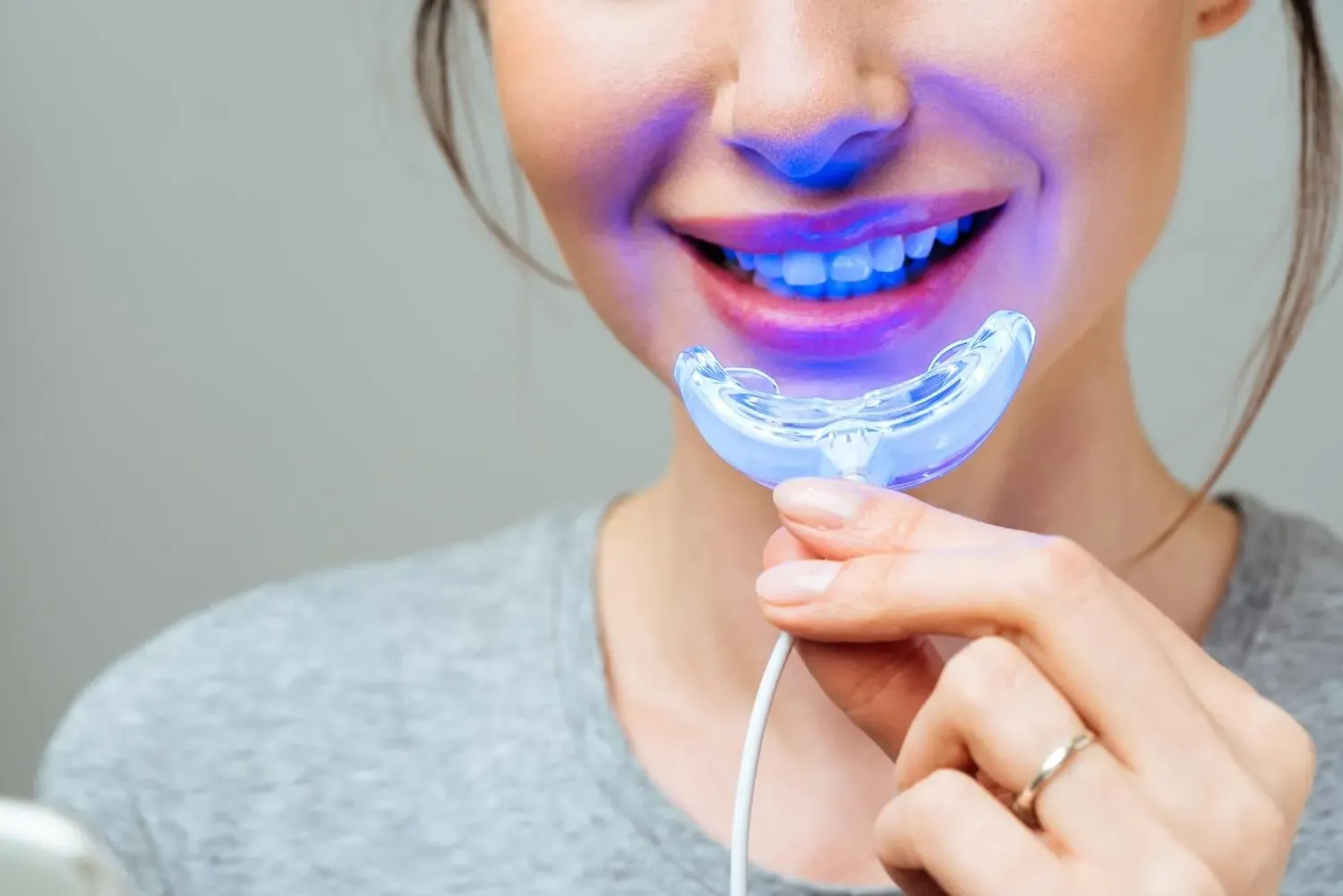
Professional Whitening: Results Duration
Average lifespan: 1–2 years
Professional teeth whitening performed by a dentist offers the longest-lasting results. However, diet, maintenance, and oral hygiene habits play key roles in preserving brightness. Dentists often recommend a quick touch-up every 12–18 months to maintain a radiant smile.
At-Home Whitening: Expected Longevity
Average lifespan: 6–12 months
At-home kits provide flexibility and convenience, especially when prescribed by a dentist. Consistent application and occasional refreshers help sustain results, but the effects generally fade sooner than in-office treatments.
Over-the-Counter Products: Short-Term Effects
Average lifespan: 1–3 months
Whitening toothpastes, strips, and gels can lift minor surface stains but don’t penetrate deep enamel layers. Their results are temporary and best used as maintenance between professional or at-home whitening sessions.
Signs That It’s Time for a Whitening Touch-Up
Noticeable Yellowing or Dullness
If your teeth begin to lose their sparkle and appear more yellow or dull, it’s a clear sign that stains have started to reappear.
Reduced Brightness in Photos
When your smile looks less vibrant in pictures compared to earlier results, it may be time to refresh your whitening treatment.
Uneven Coloration Between Teeth
Patchy or uneven shades across your teeth often indicate fading effects and the need for a touch-up session.
After Major Dietary or Lifestyle Changes
If you’ve increased your intake of coffee, tea, or red wine or resumed smoking schedule a whitening touch-up to maintain brightness.
How to Make Teeth Whitening Last Longer
Maintain Excellent Oral Hygiene
Brush your teeth at least twice daily using fluoride toothpaste and floss regularly to remove plaque between teeth. Incorporate an antibacterial mouthwash to keep your enamel clean and stain-free.
Limit Staining Beverages and Foods
Dark beverages like coffee, tea, and red wine can discolor teeth over time. Drink them through a straw to minimize contact with enamel and rinse your mouth with water afterward.
Use Whitening Toothpaste Regularly
A gentle whitening toothpaste helps remove surface stains and preserves your post-treatment brightness between whitening sessions.
Schedule Regular Professional Cleanings
Professional dental cleanings every six months help eliminate tartar buildup and extend the lifespan of your whitening results by keeping your enamel polished and healthy.
Potential Side Effects of Frequent Whitening
Tooth Sensitivity
Repeated whitening sessions can cause temporary sensitivity to hot, cold, or sweet foods. This occurs when bleaching agents penetrate the enamel and irritate the tooth’s nerve endings. Using toothpaste for sensitive teeth can help ease discomfort.
Gum Irritation
Whitening gels that come into contact with the gums or soft tissues may lead to mild irritation or redness. Always ensure proper application and follow your dentist’s instructions to avoid chemical burns or inflammation.
Enamel Erosion Risks
Overuse of whitening products especially without professional supervision can gradually weaken tooth enamel. This makes teeth more prone to staining, sensitivity, and decay in the long run.
Expert Tips for Safe and Lasting Results
Consult Your Dentist Before Whitening
A professional evaluation helps determine whether whitening is suitable for your enamel and gum health, ensuring safe and effective results.
Limit Whitening Frequency
Avoid whitening more than two to three times a year to prevent enamel damage and sensitivity. Proper maintenance can help results last longer between sessions.
Use Custom-Fitted Whitening Trays
Custom trays ensure even gel distribution and minimize the risk of gum irritation or uneven whitening.
Follow a Whitening-Friendly Diet
Limit stain-causing foods and drinks such as coffee, red wine, and berries. Opt for water, white meats, and crunchy fruits like apples to keep your teeth bright.
Rinse After Staining Foods
After consuming foods or drinks that can discolor teeth, rinse your mouth with water to reduce pigment absorption and maintain your whitening results.
Conclusion: Bright Smiles Require Consistent Care
The results can range from three months to two years, depending on the whitening method, your diet, and your daily oral care habits. Professional whitening provides the most durable results, while over-the-counter options deliver shorter-term brightness.
To preserve your radiant smile, practice consistent oral hygiene, limit exposure to staining foods and beverages, and follow your dentist’s aftercare recommendations. Remember a brighter smile isn’t achieved overnight; it’s maintained through consistent care and mindful habits.
FAQs
1. How long does professional teeth whitening last?
Results typically last 12–24 months, depending on your diet and oral care routine.
2. Can I whiten my teeth too often?
Yes. Overuse may cause enamel erosion or sensitivity. Always follow your dentist’s advice.
3. Does whitening damage my teeth?
No, when done correctly under professional supervision, whitening is safe and effective.
4. How soon can I eat after whitening?
Avoid dark-colored foods or beverages for 24–48 hours post-treatment.
5. What’s the best way to maintain whitening results?
Brush regularly, use whitening toothpaste, and get touch-ups every 6–12 months.
6. Are there long-term risks?
No significant long-term risks when used responsibly. However, overuse can lead to sensitivity.






